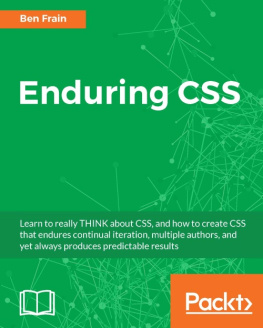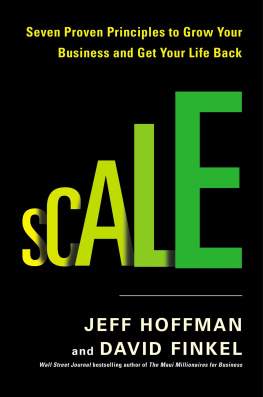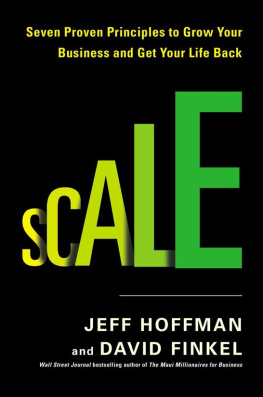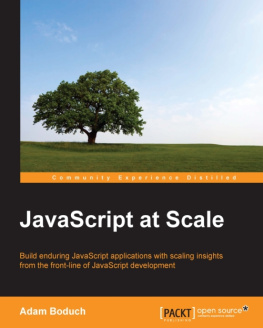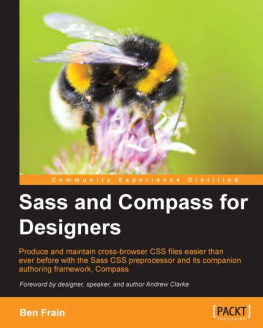Ben Frain [Ben Frain] - Enduring CSS
Here you can read online Ben Frain [Ben Frain] - Enduring CSS full text of the book (entire story) in english for free. Download pdf and epub, get meaning, cover and reviews about this ebook. year: 2017, publisher: Packt Publishing, genre: Computer. Description of the work, (preface) as well as reviews are available. Best literature library LitArk.com created for fans of good reading and offers a wide selection of genres:
Romance novel
Science fiction
Adventure
Detective
Science
History
Home and family
Prose
Art
Politics
Computer
Non-fiction
Religion
Business
Children
Humor
Choose a favorite category and find really read worthwhile books. Enjoy immersion in the world of imagination, feel the emotions of the characters or learn something new for yourself, make an fascinating discovery.
- Book:Enduring CSS
- Author:
- Publisher:Packt Publishing
- Genre:
- Year:2017
- Rating:5 / 5
- Favourites:Add to favourites
- Your mark:
Enduring CSS: summary, description and annotation
We offer to read an annotation, description, summary or preface (depends on what the author of the book "Enduring CSS" wrote himself). If you haven't found the necessary information about the book — write in the comments, we will try to find it.
- Address the problems of CSS at scale, avoiding the shortfalls of scaling CSS.
- The shortfalls of conventional approaches to scaling CSS.
- Develop consistent and enforceable selector naming conventions with ECSS.
- Learn how to organize project structure to more easily isolate and decouple visual components.
Learn with me, Ben Frain, about how to really THINK about CSS and how to use CSS for any size project! Ill show you how to write CSS that endures continual iteration, multiple authors, and yet always produces predictable results. Enduring CSS, often referred to as ECSS, offers you a robust and proven approach to authoring and maintaining style sheets at scale.
Enduring CSS is not a book about writing CSS, as in the stuff inside the curly braces. This is a book showing you how to think about CSS, and be a smarter developer with that thinking! Its about the organisation and architecture of CSSthe parts outside the braces. I will help you think about the aspects of CSS development that become the most difficult part of writing CSS in larger projects.
Youll learn about the problems of authoring CSS at scaleincluding specificity, the cascade and styles intrinsically tied to document structure. Ill introduce you to the ECSS methodology, and show you how to develop consistent and enforceable selector naming conventions. Well cover how to apply ECSS to your web applications and visual model, and how you can organize your project structure wisely, and handle visual state changes with ARIA, providing greater accessibility considerations. In addition, well take a deep look into CSS tooling and process considerations. Finally we will address performance considerations by examining topics such as CSS selector speed with hard data and browser-representative insight.
What you will learn- The problems of CSS at scalespecificity, the cascade and styles intrinsically tied to element structure.
- The shortfalls of conventional approaches to scaling CSS.
- The ECSS methodology and the problems it solves.
- How to develop consistent and enforceable selector naming conventions with ECSS.
- How to organise project structure to more easily isolate and decouple visual components.
- How to handle state changes in the DOM with ARIA or override selectors.
- How to apply ECSS to web applications and visual modules.
- Considerations of CSS tooling and processing: Sass/PostCSS and linting.
- Addressing the notion of CSS selector speed with hard data and browser representative insight
Ben Frain, Senior Front-end Developer at bet365, is a widely respected CSS developer and industry thought leader. Ben is the author of two successful and widely respected books Responsive Web Design with HTML5 and CSS3 and Sass and Compass for Designers, both published by Packt Publishing. Ben lives in Cheshire, England with his wife and two children. You can follow him on Twitter at http://twitter.com/benfrain and at his website (http://benfrain.com).
Table of Contents- Writing Styles for Rapidly Changing, Long-lived Projects
- The Problems of CSS at Scale
- Implementing Received Wisdom
- Introducing the ECSS Methodology
- File Organisation and Naming Conventions
- Dealing with State Changes in ECSS
- Applying ECSS to your Website or Application
- The Ten Commandments of Sane Style Sheets
- Tooling for an ECSS Approach
- CSS Selector Performance
- Browser Representatives on CSS Performance
**
About the AuthorBen Frain, Senior Front-end Developer at bet365, is a widely respected CSS developer and industry thought leader. Ben is the author of two successful and widely respected books Responsive Web Design with HTML5 and CSS3 and Sass and Compass for Designers, both published by Packt Publishing. Ben lives in Cheshire, England with his wife and two children.
Ben Frain [Ben Frain]: author's other books
Who wrote Enduring CSS? Find out the surname, the name of the author of the book and a list of all author's works by series.

![Ben Frain [Ben Frain] Enduring CSS](/uploads/posts/book/119144/thumbs/ben-frain-ben-frain-enduring-css.jpg)




